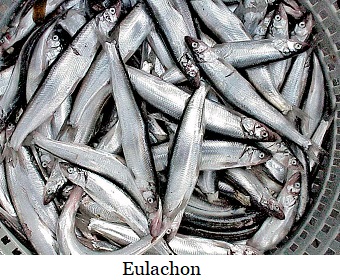
On this day, August 22, 2002, President George W. Bush proposed to end the government's "hands-off" policy in national forests and ease logging restrictions in fire-prone areas.
Also on this day, August 22, 2014, the State of Oregon filed a $200 million suit against Oracle Corp. and several executives over the company's role in creating the troubled website for the state's online health insurance exchange.
Also on this day, August 22, 2020, demonstrators faced off in Portland with the two sides -- one aligned with a "Back the Blue" rally and the other a Black Lives Matter counter-demonstration -- reportedly largely ignoring police warnings. Ultimately, Department of Homeland Security officers deemed the gatherings unlawful and moved through the plaza, forcing the crowd to disperse.
Timberlands are being closed down in case the spotted owl comes back some day
Editor’s note: This is the third in a multi-part series on the Oregon Department of Forestry's Habitat Conservation Plan and how it impacts wildlife and communities
The Oregon Department of Forestry's
Habitat Conservation Plan is on the verge of being adopted and will impact Oregon forest management. Covered species -- those for which an incidental take permit will be needed -- are those species for which USFWS and NOAA Fisheries will provide take authorization to the Oregon Department of Forestry to authorize take that may occur during the implementation of covered activities. Species were selected for coverage if all four of the following criteria were met:
- The species range overlaps with the permit area.
- The species is currently listed under the ESA or is likely to become listed during the permit term.
- The species is likely to be impacted by covered activities.
- There is enough data available to adequately assess the potential for covered activities to impact the species and to create a conservation strategy for the species that will adequately avoid, minimize, and mitigate the impact of any taking of the species that occurs from covered activities.
| Species |
| Fish |
| Oregon Coast coho |
| Oregon Coast spring-run chinook |
| Lower Columbia River chinook |
| Lower Columbia River coho |
| Columbia River chum |
| Upper Willamette River spring-run chinook |
| Upper Willamette River winter steelhead |
| Southern Oregon/Northern California Coast coho |
Southern Oregon/Northern California Coastal
spring-run chinook |
| Eulachon |
| Birds |
| Northern spotted owl |
| Marbled murrelet |
| Amphibians |
| Oregon slender salamander |
| Columbia torrent salamander |
| Cascade torrent salamander |
| Mammals |
| Coastal marten |
| Red tree vole, North Oregon Coast population |
Covered activity categories include:
- Timber Harvest
- Stand Management
- Road System Management
- Recreation Infrastructure
- Construction and Maintenance
- HCP Conservation Actions
There are 17 species -- plus another 60 plus non-listed species -- proposed for coverage in the draft Habitat Conservation Plan: 10 fish, 2 birds, 3 salamanders, and 2 mammals.
The
Executive Summary of the Habitat Conservation Plan describes a conservation strategy [which] will result in an increase in habitat for all of the terrestrial covered species, but other factors may remain that limit the ability of covered species to take advantage of the new habitat and for populations to increase. Clatsop County has not seen a spotted owl in almost a decade, but the Endangered Species Act says that a protected species does not have to occupy habitat for it to be deemed critical habitat. So, Clatsop County’s timberlands are being closed down in case the spotted owl comes back some day.
The Conservation Fund, described in Chapter 9 [of the Endangered Species Act], Costs and Funding, will provide funding on an annual basis to address these limiting factors. The priorities for how the Conservation Fund is used will change during the permit term, but ODF will work with species experts and other state and federal partners to identify where and how Conservation Fund monies are spent. Conservation Fund monies will be derived from ODF’s share of timber sale revenues, at a rate of $5 per thousand board feet harvested.
The HCP includes a monitoring program to demonstrate that ODF is operating in compliance with the commitments made in the HCP and associated incidental take permits. The monitoring program also helps to assess whether the conservation strategy is performing as expected. Compliance
monitoring will focus on whether the HCP is being implemented properly and as required by the permits. Compliance monitoring results will be summarized in an annual report to USFWS and NOAA Fisheries. Effectiveness monitoring will be completed to track progress towards the biological goals and objectives. Effectiveness monitoring will include validation of habitat development as estimated by species habitat models and species response to changes in habitat quality
The end product will be approved by the Oregon Department of Forestry and become a part of
Oregon Administrative Rules.
--Staff Reports| Post Date: 2023-09-09 06:18:06 | Last Update: 2023-09-06 21:03:49 |






